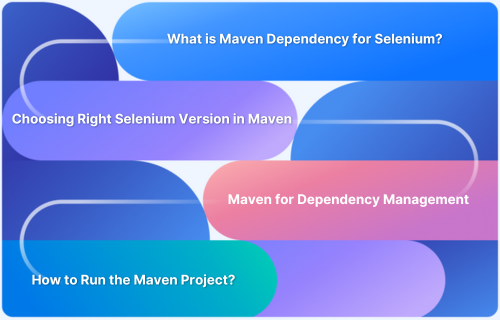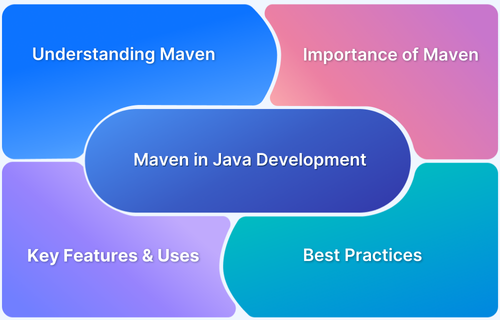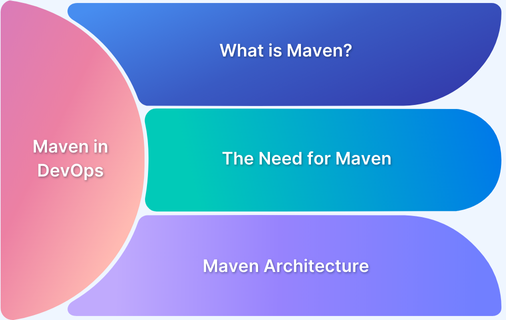In automation testing, dependency management plays a crucial role in ensuring that your testing frameworks, tools, and libraries are consistently available, compatible, and up to date.
Proper dependency management helps you avoid issues such as missing libraries, version conflicts, and inconsistent test environments.
What is Maven Dependency?
Maven Dependencies are external libraries or artifacts that a project requires to function properly. In the Maven build automation tool, dependencies are specified in the pom.xml file, which allows developers to easily manage and include external JAR files and other resources.
Maven automatically downloads these dependencies from a central repository or local cache, ensuring the correct versions are used throughout the project. This simplifies project setup and reduces the complexity of managing libraries, allowing developers to focus on writing code.
Types of Maven Dependencies
Maven dependencies can be classified into two main types based on how they are included and managed within a project:
Direct Dependencies: These are explicitly defined in a project’s pom.xml file under the <dependencies> section. They are the libraries that your project directly relies on for its functionality.
For example, if your project requires a specific library like JUnit for testing, you would specify it directly in your pom.xml.
<dependency> <groupId>junit</groupId> <artifactId>junit</artifactId> <version>4.13.1</version> <scope>test</scope> </dependency>
Transitive Dependencies: These are indirectly included when you add a direct dependency. A project that you include as a direct dependency may have its own dependencies declared in its own pom.xml file.
- Maven automatically manages these transitive dependencies, ensuring that all required libraries are available for your project without needing to specify them individually.
- For example, if you include a library A that relies on library B, when you add A to your project, Maven will also download B, even though you haven’t explicitly listed it in your pom.xml.
To list all your project’s direct and transitive dependencies in a Maven project, you can use the following command:
mvn dependency:tree
Advantages of Maven for Web Projects
Here are some key benefits and advantages of using Maven for web projects:
- Streamlines project management tasks like building, documenting, releasing, and distributing.
- Improves build efficiency and overall project performance.
- Removes the need to manage dependencies and processes when working in different environments.
- The pom.xml file simplifies the addition of new dependencies.
Must Read: Maven Dependency Management with Selenium
Manage Maven Dependency with Selenium
Managing Maven dependencies for Selenium in your project involves a few straightforward steps to ensure that you can efficiently utilize Selenium for automated testing.
- Adding Dependencies: To use Selenium in a Maven project, add the required Selenium dependencies in the pom.xml file under the <dependencies> section.
- Version Control: Specify the exact version of the Selenium libraries to ensure compatibility and avoid issues with updates.
- Transitive Dependencies: Maven automatically includes any dependencies required by the specified libraries, simplifying the management process.
- Central Repository: Maven pulls dependencies from the central Maven repository, allowing easy access to the latest versions of Selenium libraries.
- Updating Dependencies: Use Maven commands like mvn clean install to update the project and ensure all dependencies are correctly downloaded and linked.
If you are a developer or a tester, BrowserStack allows you to access 3,500+ real devices and browsers on a cloud platform to run Selenium Tests on real devices.







